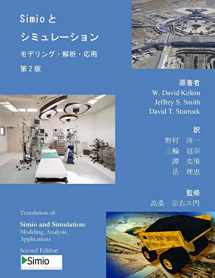
Simio and Simulation: Modeling, Analysis, Applications: Second Edition - Japanese Translation (Japanese Edition)
Book details
Summary
Description
This second edition was written and translated by seasoned simulation professionals. It clearly explains how to use simulation to make better business decisions in application domains from healthcare to heavy manufacturing and everything in between. Modern software makes simulation more useful and accessible than ever and this book illustrates the concepts with Simio, a leader in simulation software.
This book can serve as the primary text in introductory and second courses in simulation at both the undergraduate and beginning-graduate levels. The text or components of it could also support a simulation module of a few weeks within a larger survey course in programs without a stand-alone simulation course (e.g., MBA). It is written in an accessible tutorial-style writing approach centered on specific examples rather than general concepts, and covers a variety of applications including an international flavor. Our experience has shown that these characteristics make the text easier to read and absorb, as well as appealing to students from many different cultural and applications backgrounds.
A first simulation course would probably cover Chapters 1 through 8 thoroughly, and likely Chapters 9 and 10, particularly for upper class or graduate-level students. For a second simulation course, it might work to skip or quickly review all of Part 1 (Chapters 1-4), thoroughly cover all of Part 2 (Chapters 5-10) and use Part 3 as reinforcing assignments.
The extensibility introduced in Chapter 10 could provide some interesting project work for a graduate student with some programming background, as it could be easily linked to other research topics. For a simulation module that's part of a larger survey course, concentrating on Chapters 1, 5, and 6, and then perhaps lightly touch on Chapters 7 and 8 and some of Part 1, as time permits, would be recommended. Supplemental course material is also available on-line.


We would LOVE it if you could help us and other readers by reviewing the book
Book review



